Amon’s awakening… or the closest graphic depiction of how yours truly wakes up in the morning | Source: Cuarto Mundo
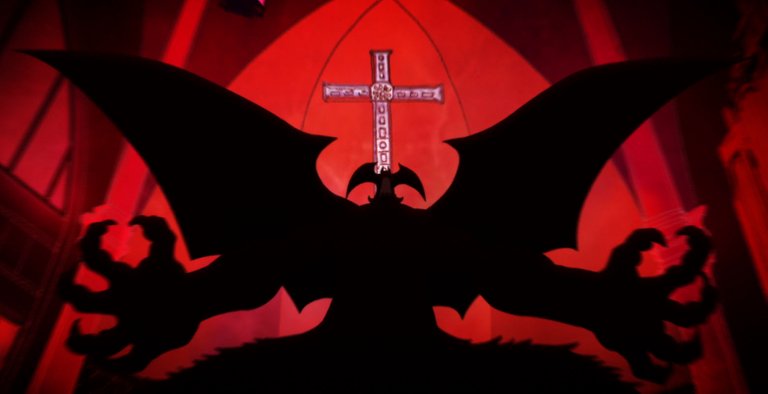

Even though many currently consider Osamu Tezuka the father of manga - some consider him the Walt Disney of Japan - we can closely associate another name with said medium’s internationalization and maturity: Go Nagai. Visual artist and mangaka Kiyoshi Nagai’s (Wajima, Japan, 06.09.1945) pseudonym is synonymous with the Super Robot genre’s birth. By virtue of creating emblematic titles such as Mazinger Z (1972), Grendizer (1975) and Mazinkaiser (2001), Nagai is responsible of one of the largest Japanese entertainment franchises ever.
Nevertheless, subscribing Go Nagai's career only to this genre would be unfair. Truth be told, the artist has been involved in the creation of more complex and polarizing works; his manga Harenchi Gakuen (Shameless School, 1968) raised a huge controversy due to the strength of its erotic content. Although Nagai's aim in his story was never sex itself - according to his own admission, the real theme of his work is the culture of shame typical in Japanese culture - the truth is that Harenchi Gakuen is considered by many to be the first erotic manga published in Japan and the first hentai work in contemporary history.
As expected, Japanese society's reaction was not exactly mild. A huge wave of parents and teachers associations (PTAs) came to call Harenchi Gakuen a vulgar, unartistic work, and Go Nagai an "enemy of society". The division between fans and critics lasted for years, permeating every version and derived works afterward. Its adversaries tried to boycott each new product of the franchise even before it arrived at stores; conversely, its believers supported his work through letters and articles, knowing that many of its supposed critics - as Nagai confesses in several interviews - consumed products much more morbid than his own oeuvre.
Reacting to said controversy, Go Nagai decided to give Harenchi Gakuen an extremely violent ending in which the titular school of the saga is invaded by the PTAs in question, bloodily exterminating its students and tutors.
Harenchi Gakuen had died...
... but the author who would pen Devilman was born.
Devilman, indeed, is not a work for the faint of heart | Source: Reddit
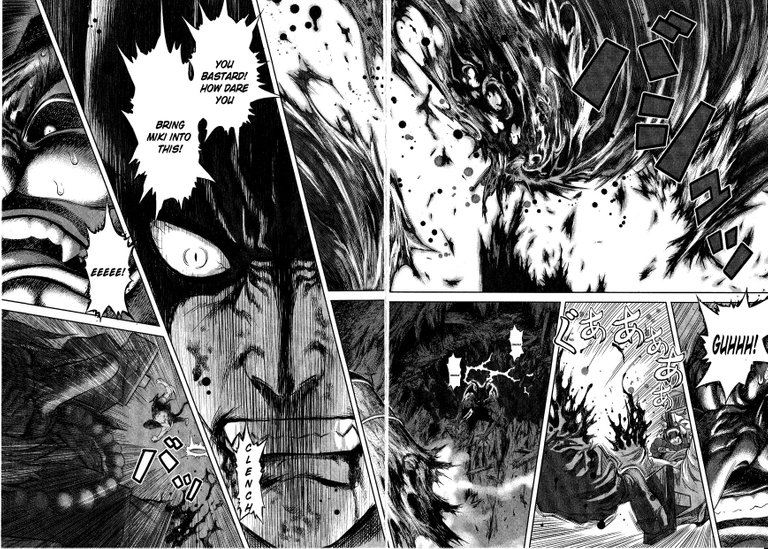
Considered along with the Mazinger franchise as its author's masterpiece, Devilman is perhaps one of the most bloodthirsty and adult manga series published during the 70s. Initially created as a more heroic and less grim version of Demon Lord Dante (1971) - a work with which it shares a strong transgression of good and evil’s traditional views - at the request of Toei Animation, Devilman contains a strong anti-war message on each of its pages. In 2002, in an article celebrating 30 years of Devilman’s first issue, Go Nagai noted:
I am the author of Devilman yet throughout its creation, I felt as though I were being pushed by an invisible power. There is no justice in war, any war, nor is there any justification for human beings killing one another. Devilman carries a message of warning, as we step toward a bright future.-- Go Nagai
Deep down, Devilman is much richer, both philosophically and spiritually, than its crudity and violence let us see. Through his war against both demons and the show’s true antagonist, Akira Fudo - Devilman's protagonist and host to the saga's titular character - always upholds his human condition in the face of a world that becomes increasingly indolent and malignant under the demonic invasion’s influence. Go Nagai even subtly plants the doubt as to whether humans are even worse than their infernal enemies.
Beginning with an animated version in 1972 by Toei Animation and a manga published in parallel in Weekly Shonen Magazine, Nagai's story gave birth to a franchise as expansive as Mazinger, with numerous spin-offs and crossovers that include the following:
- Mazinger Z vs. Devilman (1973), a non-canonical film by Dynamic Productions and Toei Doga in which both characters coincide and fight each other in a plot that mixes the events of both stories.
- Devil Lady (1997), a rethinking of the story in which Amon's host is a woman, Jun Fudo
- Cyborg 009 vs. Devilman (2015), a three OVAs’ series in which mangaka Shotaro Ishinomori’s well-known cyborg gang must face Amon.
Even though we now understand how this happened… back then, this came from nowhere | Source: El Vortex
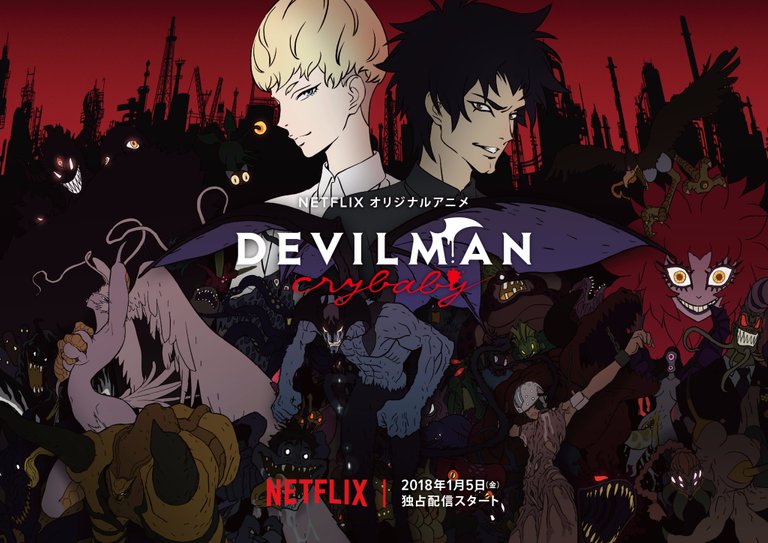
In 2017, Netflix surprised both mainstream audiences and the medium’s connoisseurs by announcing that it would produce a modern adaptation of the already mythical Nagai masterpiece. Directed by the renowned animator Masaaki Yuasa, this series would be the beginning of a great investment by the American chain to produce original anime. One that was mostly motivated by both the great reception of Castlevania’s (2017) first season and the success of its retransmissions of popular series and films in Japan, such as Knights of Sidonia (2014) and Godzilla: Planet of the Monsters (2017).
Finally, in January 2018, Netflix premiered Devilman Crybaby’s full season through its streaming service. The result is a visually rich and surprising work that, while it has some notorious bumps when it comes to encompassing and modernizing Nagai’s original plot, will leave no one indifferent.
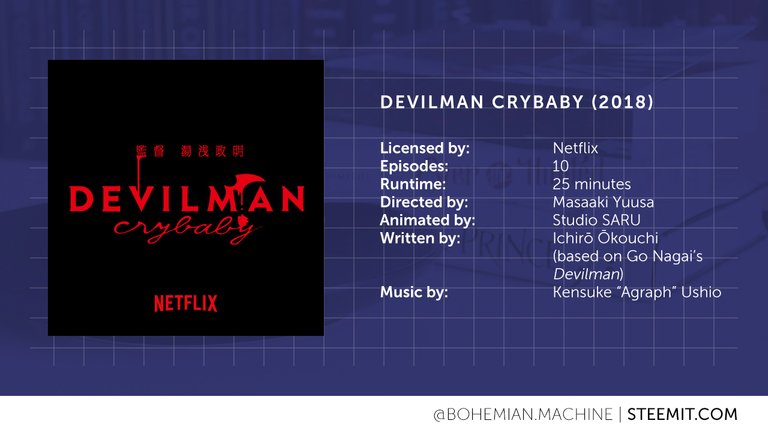

Devilman Crybaby's story begins pretty much as it did in the manga, introducing us to Akira Fudo, an introverted Japanese high school student who suffers from bullying because of his poor physical abilities and his excessive empathy with the pain and sadness of others. Raised by the parents of Miki Makimura, his childhood friend and long-time crush, Akira Fudo leads, for the most part, a quiet life away from his biological parents, as their careers as worldwide-known archaeologists prevent them from spending too much time in Japan.
However, the appearance of an old family friend and child prodigy, young doctor Ryo Asuka, exposes Akira to a reality that is as horrible as it is unexpected. After an expedition in the Amazon that ended with the tragic death of his mentor, Ryo confesses to Akira that there are demons in the real world and asks his help in the fight against them. After taking him to an orgiastic party at an informal Tokyo nightclub known as the Black Sabbath - I see what you did there, Nagai - Ryo violently attacks those attending the event with a broken bottle. This confuses and terrifies Akira, who can only watch, helplessly, as the bacchanal slowly turns into a bloody massacre.
Among those attending the site, several people begin to transform themselves into malignant and deformed creatures, devouring, crushing and tearing apart the remaining humans who, according to Ryo, have not been possessed by demons. Ryo insists, to Akira's greatest surprise, on invoking an infernal warrior who considers humanity's only response against this menace: Amon, Lord of War, the only one capable of defeating the growing horde of monsters in the establishment.
In the midst of his disturbing actions, some of the demons in the compound subdue Ryo. Still overwhelmed, his friend's unfavorable condition causes Akira to run toward him, trying to help him. Just as a recently risen demon behind him threatens to devour him, Akira screams in terror...
... and Amon listens.
Miki, my love… Here’s Akira! | Source: The Verge

After saving his friend, Akira wakes up the following morning noticing a series of changes in his physique and behavior. His otherwise wimpy body has mutated in build, strength, and speed, to such an extent that he goes from being the slowest runner in the school to one of the fastest, surpassing even his beloved and admired Miki. Akira has also become prey to his instincts, especially sexual desire, to the point of openly watching a pornographic film with disregard for his peers in his school’s auditorium. On top of that, his physical change also makes him more attractive to the eyes of various women in the school, who quickly create a cult around him; as a result, rumors about Akira having some sort of surgery or body change grow.
However, the demonic menace does nothing but to increase. After successive attacks by monsters both in his neighborhood and throughout the city, Akira decides to start a vigilante spree with Ryo’s close support, with the latter becoming a sort of chronicler and sidekick to the former’s crusade for justice. Noting that it is impossible for him to lose his empathy and compassion for his peers even after his transformation, Akira convinces himself that he is neither human nor demon, but something much better.
Akira brands himself as a Devilman.
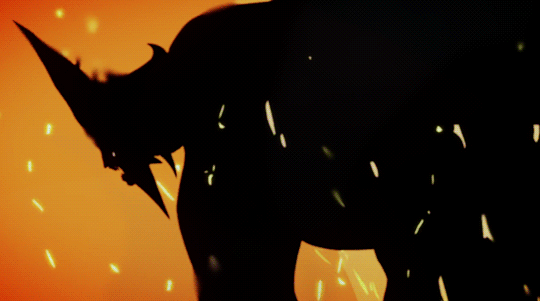
If anything about Devilman Crybaby should be universally acclaimed, it should be its animation | Source: El Vortex
Beyond the plot’s modernization and adaptation into our current times, Devilman Crybaby is a almost verbatim roughly precise adaptation of Go Nagai’s originally written plot, a fact quite admirable in times when filmmakers and producers always seek to add changes that are near-universally detrimental to the original content. Devilman Crybaby's production team, however, has centered in adding, both in characters and events, certain novelties that do their best to enrich the plot in intention and create a grotesque, often difficult-to-watch show about the human condition.
Produced by Japanese studio Science SARU, Devilman Crybaby's animation is, from beginning to end, an exquisite and overwhelming experience. Fluid, naturalistic and very colorful, its Masaaki Yuusa-directed imagery is as violent and ruthless as the original manga’s thumbnails. A fact reinforced by Kensuke "Agraph" Ushio’s wonderfully composed soundtrack, opting for a mixture of electronics, techno and orchestral music that manages to be emotional where it should be and chaotic and instinctive in most of the fighting scenes. Undoubtedly, the almost erotic impulses of its synthesizers and percussion do wonders for this series, reinforcing much of its identity.
However, not everything in Devilman Crybaby is perfect.
Unfortunately, much of the polarization one may feel about it originates precisely from its plot treatment.

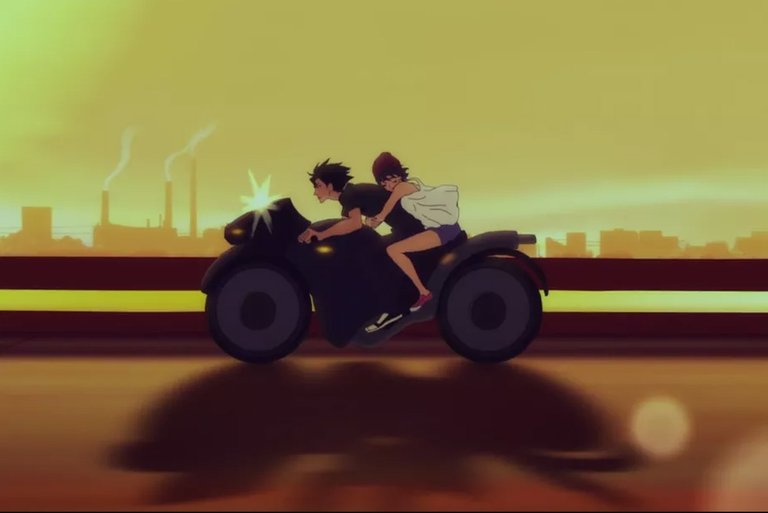
The love story that Devilman Crybaby could have been but didn’t, for the most part, is a great compliment to a devastating ending that saves an otherwise "too-convoluted-for-its-own-good" plot | Source: Polygon
Although some aspects of the story - the never-meant-to-be love between Akira and Miki, as well as the true antagonist’s close association with Akira – have a much greater relevance in Devilman Crybaby, the truth is that the plot’s rhythm can feel awkward, especially during the story’s second act. Not that this is exclusive to the 2018 animation; Nagai's own work, according to even his fans, has certain bumps that are accusable to the mangaka’s youth and naiveté as creator during his time, especially when we consider that the genre framing it - the everlasting shonen - is not exactly a showcase for mature, well-laid stories.
To leave these holes in the plot unattended and, to top it all, ending up introducing new ones, is what makes Devilman Crybaby a much more lackluster experience than one would have wanted it to be. The antagonist’s heel turn, which takes place near the plot’s end, is given such minimal time to breathe that it loses credibility at the cost of winning in shock value. Sadly, this is more or less how all the plot changes in the whole season: by constantly seeking that haymaker that disarms and blows our heart to bits, even while going against logic and good storytelling. It would perhaps have been wiser to sacrifice one or two of the new characters - whose effect on the plot, by the way, ends up being minimal - in order to develop a more organic, justified third act.
However, is this truly a significant detriment to Devilman Crybaby?
Yes and no.
While scenes like this one are very powerful as ideas, their execution is so poor that they almost derail Devilman Crybaby’s plot | Source: Knox Codes
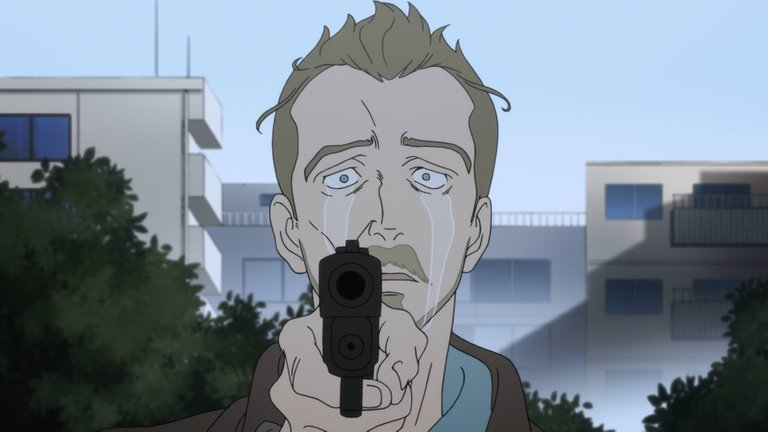
We should be clear about something: by the time these events happen, either the series has already mesmerized you enough to make you care about it, or you have already been so demotivated that it will not matter. For those on the first side, though, who have become emotionally involved with the plot at this point, this can't help but leave a bad taste in their mouths. The only thing that saves this, fortunately and barely, is an ending that, without a doubt, is one of the crudest and most hopeless in recent shows and movies.
And by crudest and hopeless, I mean enough to compete one-on-one with The End of Evangelion (1997).
The series is not afraid to play with an ending a-la-Breaking Bad (2008-2013), seeming to end its run on its ninth episode only to present us with a much more powerful and complex epilogue in the tenth. One that, no matter what opinion of the series you have until then, is worthy of discussion and comment among friends and fans for the way it manages to makes us reflect about our true nature, doing a commendable work at traducing Nagai’s work in the screen.
And for this fact alone, Devilman Crybaby gets to be relevant at the end.
Do you seriously believed Evangelion’s ending was hard? WRONG | Source: Polygon

Both for its wonderful animation and its complex, eclectic soundtrack, Devilman Crybaby’s intent manages to survive its various shortcomings and establish itself as a highly recommended option for those who want to revive their love for anime. Although it is quite far from the modern classic some reviewers are calling it to be, Masaaki Yuasa's work, by virtue of being incredibly faithful to Go Nagai's original, is there to remind us that the devil is inside us…
... and that we can't help but feel sympathy for him.
Thank you for reading my post!
I try to answer as many comments as possible, so, feel free to leave yours in the comment section! 👇
100% original content made by yours truly,

Hi bohemian.machine!
I am @eaudebla, a curator for AkibaSteem and this is just to let you know that I upvoted your post:
Also, feel free to join our community on Discord!

https://discord.gg/7JQruwmI find it absolutely delighting that Mr Nagai went that way on finishing Harenchi. He was right. People is often scandalized by stuff in media that are way milder than what they do in their secret lives... Maybe I'm over-connecting stuff here, but I find funny that the ending on Harenchi very much resembles what Dante Alighieri did in his Divine Comedy: taking mostly his detractors and giving them a special place in hell for their crimes. So did Nagai, giving his detractors their righteous place in his hellish landscape.
Maybe I'm associating too far because of all the demon talk, haha!
Loved that background intro, I didn't know much about Nagai's work besides Devilman and Demon Lord Dante, from which I enjoyed the animated version from the... 2000s I think?
Anyways, great post! Crybaby was one of the shows I most enjoyed this year, and even if it falls short in some aspects, it greatly compensates with others, making it a really good work in the end.
Also, I've had the pleasure of enjoying other of Yuaasa's works and I can say he is an absolute genius! Totally recommend Ping pong the Animation and The Tatami Galaxy!
Thanks for a nice review!
HAHAHAHAHA Not a bad association at all, my friend 😋 Given Nagai's main influence in Demon Lord Dante was Gustave Doré's own work on Dante Alighieri's Divine Comedy, I can understand your line of thought 🤣
I still have a lot of anime on my 2018's list to watch, probably well into 2019. But Crybaby is a strong contender indeed 👌 However close it was to almost derailing itself.
Thank you for your comment and recommendations 🤗 Happy New Year!
To emphasize on this point, Nagai himself adapted the poem into a manga (Dante Shinkyoku)
I wouldn't call Crybaby a verbatim adaptation of the manga. There are actually many changes that I really dislike that weren't present in the original. I also wonder if you actually read the manga, or just going by what other people say.
Other than that, good review.
Thank you for your input, @eaudebla, as well as your upvote! 🤗
I read the original manga years ago, but time has passed and I would definitively have to refresh some details. For the most part I thought the original story's essence remains there: nevertheless, as you said, there are a lot of changes, both in newly-added characters as in changes to the original ones (Jinmen's origin - and, therefore, Akira's parents -, Ryo Asuka's background, the rappers which were originally bikers, Taro's cause of demise... Too many to keep avoiding spoilers). That's why I edited the review to better reflect your opinion.
However, I wouldn't say I disliked said changes. I can get some of those were necessary to modernize the setting, and I would even say some of those have a better impact in the story. At the end of the day, though, we can always agree to disagree 😆
Indeed. To be fair, I don't hate all changes found in Crybaby and I don't mind the smartphone update, miko, the rappers, but the one that personally hit me the most was Jinmen. Having a kid getting eaten in a playground by Jinmen is a lot more horrifying than Akira's parents in a basement in Crybaby.
Furthermore, there were a few individual stories that were left out from this adaptation, which I think is a shame. Also Ryo's personality was very different and his reveal of being Satan just wasn't as well executed here.
Those are precisely the kind of things I think Netflix and Studio SARU went a little too far in Crybaby. When shock value has more worth to you as a storyteller than narrative coherence, then you're doing something wrong.
I can see they tried to pull a Snyder's Doctor Manhattan with Jinmen but, as you never really get in touch with Akira's parents, you never get to know what might have turned Akira's father into such an egotistical, cruel beast (by Crybaby's internal logic, at least). In Devilman you don't have to care about Jinmen's motivations because he's just there and Nagai quickly establishes he's one of the most sadistic, devious demons of Hell.
Netflix has been careful about doing 13-episode seasons, but I think Crybaby would have greatly benefited from this. I guess we'll have to wait and see how they adapt Devil Lady, if rumours are to be believed 🤔